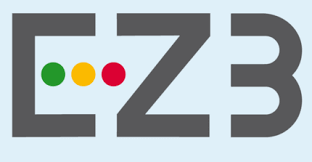Submissions
Submission Preparation Checklist
As part of the submission process, authors are required to check off their submission's compliance with all of the following items, and submissions may be returned to authors that do not adhere to these guidelines.- The submission has not been previously published, nor is it before another journal for consideration (or an explanation has been provided in Comments to the Editor).
- Where possible, the DOI (Digital Object Identifier) of the references will be provided.
- If the article is submitted to a peer-reviewed section of the journal, the instructions to ensure anonymous review must be followed.
- The submission file is in Microsoft Word, Open Word, or compatible format.
- The article must be included in one of the sections of the Journal.
- Where possible, the URL addresses of the references should be provided.
- The text complies with the stylistic and bibliographic requirements indicated in Author Guidelines that can be found in “Submissions”, as well as with the ethical and conflict of interest standards.
Scientific research articles and review of the state of the art
As research articles, writings that present the results of research projects. As a review of the state of the art, works that present a systematic review of literature related to the theme of the journal are included.
Postgraduate Thesis Summaries
Summaries of master's and doctoral theses that have been defended and approved are included.
Summaries of Final Specialization Projects
Summaries of final Specialization projects that have been defended and approved are included.
Articles accepted and exhibited at IAPUCo congresses
Articles accepted and exhibited in congresses of the Argentine Institute of University Professors of Costs
Professional articles, case reports and pedagogical contributions
A professional article is understood as any technical-professional advance whose objective is to deal with practical aspects, contribute to technological progress and/or communicate new knowledge of the discipline. As case reports, works that present technical-professional results applied to a specific situation are included. As pedagogical contributions, communications related to the specific teaching activity of the area are included.
Articles to encourage participation
Works by young professionals, postgraduate students and/or teaching assistants of careers related to the theme of the magazine are included.
Bibliographic reviews
Critical review of the literature related to Costs and Management.
Reports to outstanding personalities in the discipline
Interviews with professionals, entrepreneurs or academics about their experiences in cost management are included.
Translations or transcripts
Translations of classic books and articles on the subject of costs and management. Transcription of historical documents associated with the theme of the magazine.
Cartas al editor: aportes a la discusión
Estarán referidas a los artículos publicados o a cualquier otro tópico de interés incluyendo sugerencias y críticas. No deberán tener una extensión mayor a ocho paginas. Serán incluidas a criterio del Editor Responsable y del Comité Editorial.
Copyright Notice
The authors who publish in this journal agree to the following terms:
1. The authors retain copyright and guarantee to the journal the right to be the first to publish the work as well as licensed under a Creative Commons Attribution-NonCommercial 4.0 International license. CC BY-NC 4.0.
2. Authors may separately enter into additional agreements for non-exclusive distribution of the version of the work published in the journal (e.g., placing it in an institutional repository or publishing it in a book) with an acknowledgment of its initial publication in this journal.
3. Authors are allowed and encouraged to disseminate their work electronically (e.g., in institutional repositories or on their own website) before and during the submission process, as this can lead to productive exchanges as well as earlier and greater citation of published work.
Privacy Statement
Names and email addresses entered on this journal website will be used exclusively for the purposes stated in this journal and will not be made available for any other purpose or to any other party.




























